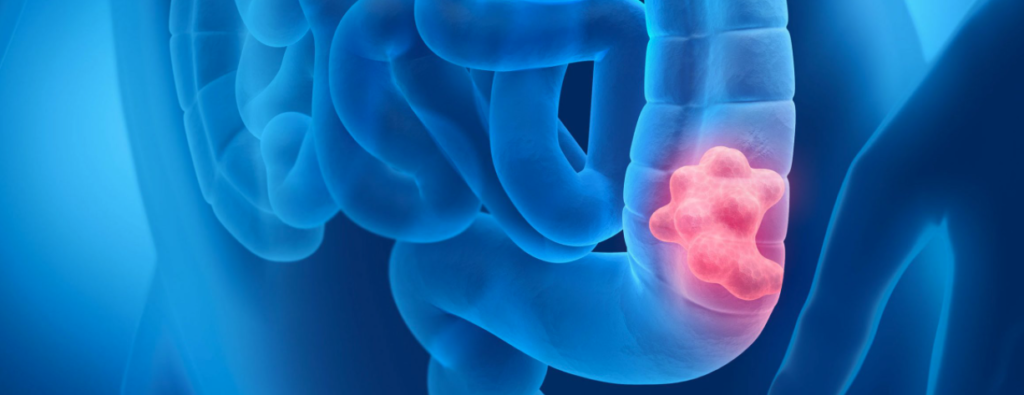Colorectal cancers are the 2nd most common cancer in women and 3rd in men. While the risk of occurrence in the general population is 5%, this rate is 15-20% in those with a family history of colorectal cancer, 15-40% in those with inflammatory bowel disease, and 70-80% in those with familial non-polyposis colorectal cancer (HNPCC) mutations and familial adenomatous polyposis (FAP). ) is 100%.
These risks increase with a sedentary lifestyle, obesity, alcohol, smoking and age.
Risks are reduced by fiber consumption, vegetable and fruit consumption, calcium, vitamin D, folic acid supplementation, exercise and screening programs.
Initially, the symptoms are not very obvious.
Recurrent diarrhea and constipation
Thinning of stool thickness,
Bleeding from the anus and defecation,
Egg white-looking (mucous) secretion in defecation,
The feeling of not emptying the intestines enough,
Painful defecation,
Weakness,
Anemia
Anorexia,
Stomach ache,
Iron deficiency anemia,
Weight loss,
Feeling of mass in the abdomen
Seeing a doctor with such complaints and early diagnosis before the disease progresses greatly increases the chances of survival.
Colonoscopy is performed for patients with the above complaints, which enables imaging of the rectum and large intestine with a camera. If there is a mass in the large intestine or rectum, a biopsy is taken.

After diagnosis, staging is done to determine the extent of the disease. For this purpose, the following tests are used;
The stage of the disease; It ranges from stage 1, which is limited to the intestinal wall and no spread to the lymph nodes, to stage 4, where spread to distant organs is detected.
The treatment is decided according to the stage of the disease.
The treatment of colon cancer is surgery. Depending on the stage of the disease, chemotherapy may be required before or after surgery. Radiotherapy is rarely used.
The part of the intestine where the cancer is located is removed together with the vessels feeding it and the accompanying fatty tissue and lymph nodes. After the diseased area is removed, most of the time, the remaining two intestinal ends are brought together and joined together with sutures or tools called staples. This means that the patient will continue to expel their stool naturally (from the anus).
However, in special cases (intestinal obstruction, poor general condition of the patient, etc.) the two ends of the remaining intestine cannot be combined. In this case, the intestine is mouthed to the abdominal wall. This is called a stoma. Stool is taken out with a collecting bag that closes the stoma. Often these stomas are temporary. At the end of the treatment, the intestines are joined together again.
Depending on the stage of the disease, surgery, radiotherapy, and chemotherapy are often performed together.
In stage I, surgery is sufficient.
In Stages II and III, chemotherapy and radiotherapy are usually recommended before surgery. This is called neoadjuvant chemoradiotherapy. Sometimes chemotherapy is continued after surgery.
Treatment in stage IV is mostly chemotherapy. Sometimes surgery and radiotherapy may be required.
In some cases, only short-term radiotherapy (5 days) is recommended instead of chemoradiotherapy prior to surgery.
The rectum and the vessels feeding it, and the fatty tissue called the mesorectum, which contains the lymph nodes along the vessels, are removed. If the tumor extends to the anus, the anus is also removed. The remaining intestinal opening is mouthed to the abdominal wall and the stoma is opened.
Today, surgical treatment of colorectal cancers is performed with the classical open method and closed (laparoscopic and robotic) surgical methods using instruments inserted through 5-10 mm incisions.
Studies have shown that there is no significant oncological difference between closed and open methods. The laparoscopic method can provide the patient with less scarring and faster return to daily activities.
da Vinci® Robotic surgery systems have started to take place in the treatment of colorectal cancer in recent years. The tools used in this method have the ability to rotate up to 540 degrees and move easily and without vibration in a narrow space. In this way, a serious advantage is obtained in surgery performed in a very narrow area such as rectal cancer. In rectal cancer surgery, protecting the nerves in the pelvis adjacent to the operation area is very important for the continuation of the patient’s sexual functions. With the high resolution, 3D image of robotic surgery systems, the risk of nerve damage is less, especially in men and patients with narrow pelvises.
In individuals without complaints, screening should be started after the age of 50. For this purpose, occult blood in the stool should be checked annually, sigmoidoscopy should be performed every 5 years and colonoscopy every 10 years. The frequency of the procedure can be increased according to the cancer risk status.
In individuals with a first-degree relative with a history of colorectal cancer or adenomatous polyps, these procedures are started from the age of 40.
In individuals whose first-degree relatives develop colorectal cancer “at an early age”, the screening procedure should begin 10 years before the age at which the cancer is detected in their relatives.
In families with familial polyposis syndromes, genetic testing should be performed after 10-12 years of age and screening should be performed with annual sigmoidoscopies and colonoscopies.
Genetic mutations should be investigated in patients with a familial history of non-polyposis colorectal cancer. Colonoscopy every 2 years, starting from the age of 20-25 or 5 years before the age of the family member who develops early cancer, annual screening from the age of 40-45, yearly endometrial and ovarian examination in women from the age of 25-30 for other organ cancers that may develop, urine from the age of 5 Examination and cervical smear follow-up should be done once a year, skin examination once a year, and upper digestive system endoscopy every 1-3 years.
Robotic surgery is a more advanced version of the laparoscopic method.